What does blue matcha taste like?
Blue matcha has a mild, floral, slightly sweet, and earthy taste. It lacks the characteristic grassy and somewhat bitter notes that are typical of green matcha.
Keep reading to find out more about this unique ingredient!
When I first heard about blue matcha, I was intrigued by the idea of a vibrant blue counterpart to traditional green matcha tea. I had so many questions, especially regarding its taste. So, I decided to delve into this visually striking type of matcha and share my findings with fellow curious tasters.
Blue matcha is derived from the butterfly pea flower, which gives it its unique color. Unlike green matcha, it is caffeine-free and has a totally different flavor profile. The taste of blue matcha is quite subtle, earthy, and mildly floral. This alluring tea has a smooth and mildly sweet flavor, making it a delight to the palate.
Understanding the flavor of blue matcha is important not only for tea enthusiasts but also for those looking to incorporate it into different recipes. As it turns out, blue matcha can easily be a versatile ingredient, offering a unique and appealing visual appeal to various dishes and beverages without overpowering the taste.
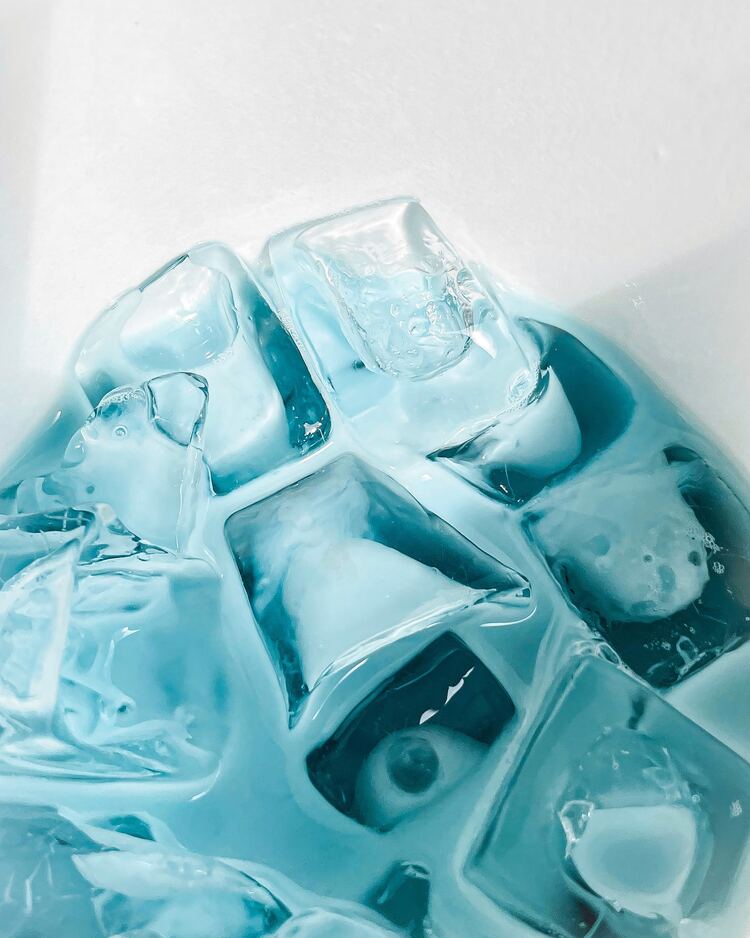
Please note: This article contains affiliate links, meaning I may earn a commission if you make a purchase by clicking a link. Of course, this comes at no extra cost to you and helps me to keep offering solid information to readers.
What Is Blue Matcha?
Blue matcha is a vibrant, all-natural powder derived from the butterfly pea flower, which is native to Southeast Asia. Like green matcha, it has recently gained popularity for its unique color and potential health benefits. Compared to green matcha, which is made from finely ground green tea leaves, blue matcha has a completely different source and flavor profile.
While green matcha contains caffeine, blue matcha is naturally caffeine-free. This makes it an excellent alternative for those who love the idea of enjoying a colorful latte or smoothie without the potential side effects of caffeine.
Regarding health benefits, blue matcha is known for its high content of antioxidants, especially anthocyanins. These antioxidants are the source of the vibrant blue color and have been linked to many potential health benefits, such as reducing inflammation and improving cognitive function.
Here’s a quick comparison of blue matcha and green matcha:
Blue Matcha
- Derived from butterfly pea flowers
- Color – Vibrant blue
- Caffeine content – Caffeine-free
- Antioxidant profile – High in anthocyanins
- Flavor profile – Earthy, floral, subtle sweetness
- Texture – Fine, powdery, slightly less clumpy than green matcha
Green Matcha
- Made from green tea leaves
- Color – Bright green
- Caffeine content – Contains caffeine
- Antioxidant profile – High in catechins
- Flavor profile – Grassy, vegetal, slightly bitter
- Texture – Fine, powdery
While blue matcha is not a direct substitute for green matcha, it still has its unique appeal and is worth giving a try if you’re open to new, colorful experiences in your beverages or dishes.
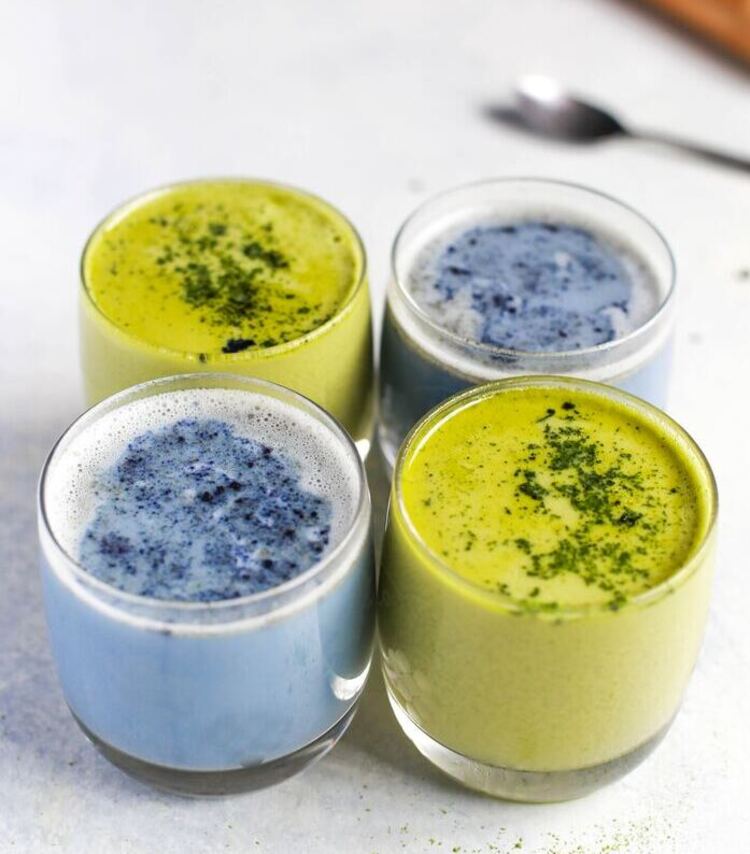
What Does Blue Matcha Taste Like?
In my experience, blue matcha is so unique! Let me break down the taste profile into initial flavor and aftertaste for a clearer understanding.
Initial Flavor
The first time I tried blue matcha, I was struck by its earthy and subtle sweetness. It has a mellow flavor profile, thanks to the natural compounds found in butterfly pea flowers. While it’s not overpowering, it does provide a nice contrast to the bitterness often found in green tea powders. I also noticed some subtle floral undertones, which added to the overall complexity of the taste.
When mixed with water, the flavor of blue matcha really shines through. Alternately, I’ve discovered that it also pairs well with milk or other non-dairy alternatives, yielding a creamier texture and a subdued, yet delicious taste.
Aftertaste
Upon finishing my first sip, I was surprised to find that the aftertaste of blue matcha was mild and smooth. There was a lingering sweetness, without any overwhelming bitterness or astringency as one might expect from green matcha. This pleasant aftertaste makes it an enjoyable drink to savor and allows for multiple steepings of the tea without losing its unique flavor.
I find that blue matcha offers a refreshing and delicate taste experience, free from excessive bitterness. Its earthy tones and slight, natural sweetness make it a delightful alternative to traditional green matcha tea.
Now, take into consideration that I am providing an overall flavor profile. Blue matcha taste will vary depending on ingredient source, preparation method, storage care, etc.
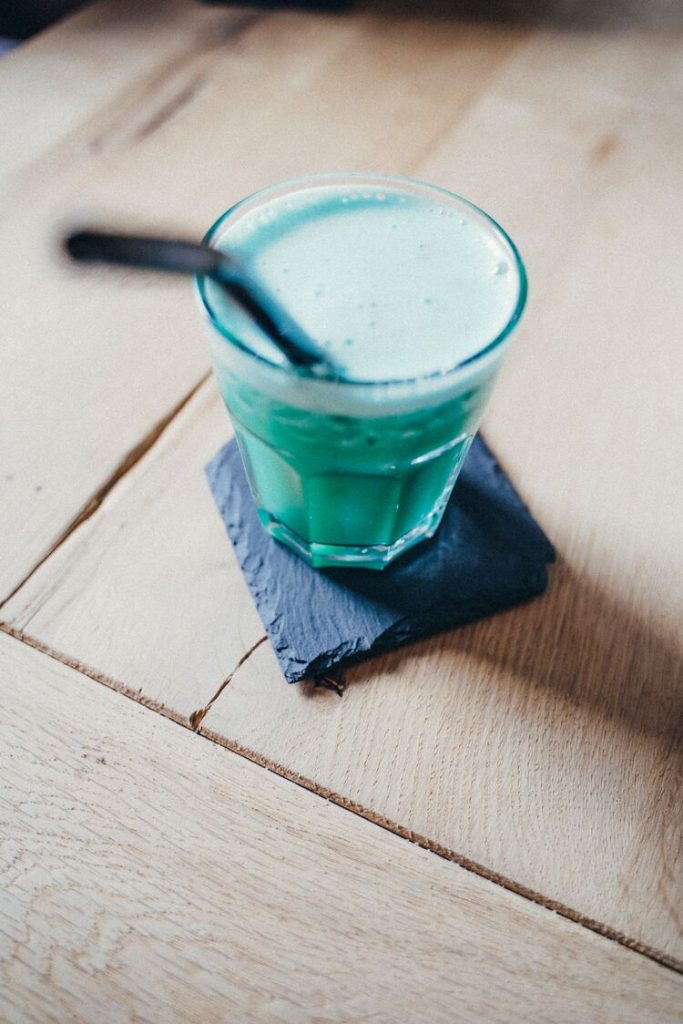
How to Use Blue Matcha
There are many ways to incorporate blue matcha into your daily routine. In this section, I will provide some ideas on how to use it in recipes, desserts, and beverages.
Recipes
Blue matcha can easily be incorporated into your favorite recipes to add vibrant color and a subtle earthy taste. I enjoy experimenting with this superfood in:
- Smoothie bowls: Blend blue matcha with fruits, yogurt, or non-dairy milk to create a nutritious and visually stunning breakfast.
- Rice dishes: Mix blue matcha into cooked rice for a fun twist on a staple side dish.
- Pasta: Create vibrant blue noodles by adding blue matcha to your pasta dough.
Desserts
My sweet tooth loves that blue matcha pairs beautifully with desserts. Some of my favorite ways to use blue matcha in sweet treats are:
- Ice cream: Incorporate blue matcha into homemade ice cream or frozen yogurt for a unique flavor and color.
- Cakes: Bake blue matcha in your favorite cake recipes or simply dust it over a finished cake for a pop of color.
- Macarons: Use blue matcha in the cookie and filling of these delicate French treats for a delightful twist.
Beverages
I often enjoy using blue matcha in various beverages, as it imparts a pleasant flavor and a striking appearance:
- Lattes: Whisk blue matcha with warm milk or alternatives for a cozy, antioxidant-rich drink.
- Lemonades: Combine blue matcha with fresh lemonade for a refreshing and colorful summer drink. By the way, when mixing with lemon (or other citrus), the color changes to purple! Some people call the combination magic lemonade.
- Cocktails: Incorporate blue matcha into your favorite cocktails for a fun and festive twist on classic drinks.
I encourage you to get creative in the kitchen and add this unique ingredient to your culinary repertoire. The possibilities are truly endless!
Health Benefits
Blue matcha not only has a unique taste, but it also has a variety of health benefits.
One of the significant perks I’ve found is that blue matcha is chock-full of antioxidants, which can help protect our cells from damage and reduce inflammation.
As for me, I was quite interested in the fact that blue matcha contains a natural compound called anthocyanin, which is responsible for its vibrant blue color. Studies have shown that anthocyanins can help promote heart health and may even improve cognitive function.
Besides all that, blue matcha also makes an excellent alternative for those who might be sensitive to caffeine. I enjoyed its subtle energy boost without the jitters commonly associated with traditional green matcha or coffee. This means I can consume blue matcha at any time of day without worrying about sleep disruption.
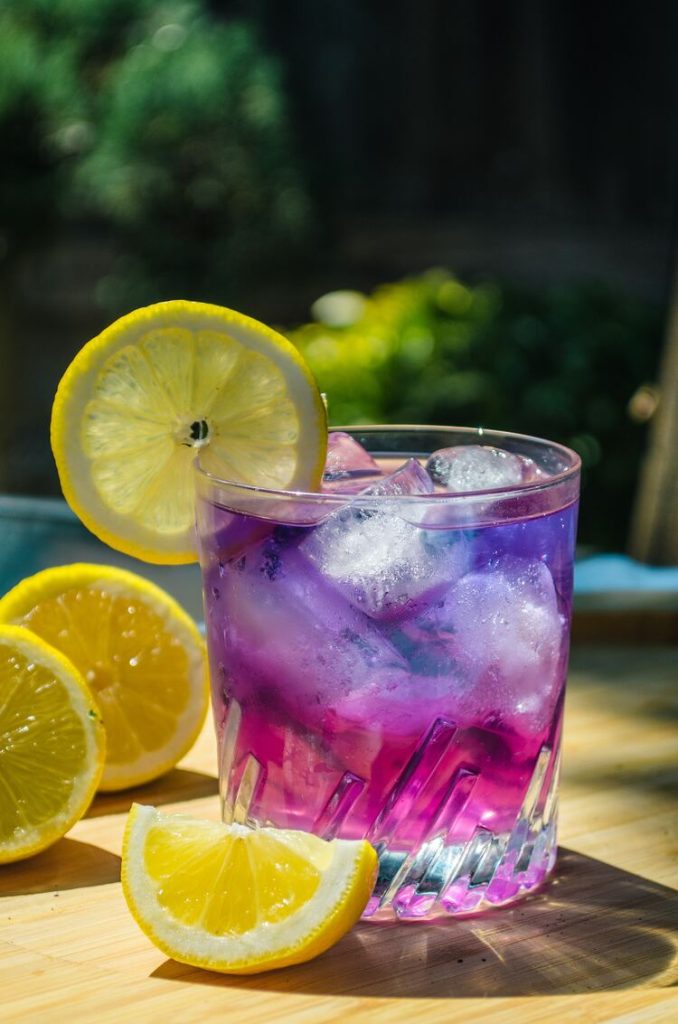
Blue Matcha Buying Guide
When purchasing blue matcha, there are several factors to consider to ensure that you get a high-quality product that meets your needs. Here are some things to keep in mind.
Source & Quality
The quality of blue matcha depends on the source of butterfly pea flowers and how they are processed. Look for a supplier that sources flowers from reputable growers who use sustainable farming practices. Ideally, the flowers should be harvested at the right time and carefully processed to preserve their natural color and flavor.
Also, I recommend choosing a brand that is certified organic.
Color & Flavor
Blue matcha powder can range in color from pale blue to deep purple, and the flavor can vary from mild to strong. Choose a product that matches your preferences and intended use. For example, if you plan to use the powder for baking or cooking, you may want a mild-flavored powder that won’t overpower other ingredients.
Packaging & Storage
Look for blue matcha powder that is packaged in airtight containers to ensure freshness and prevent moisture from entering. Check the expiration date and storage recommendations, and make sure to store the powder in a cool, dry place away from direct sunlight.
Price
Blue matcha powder can vary in price depending on the quality and quantity. Compare prices from different suppliers to get the best value for your money, but remember that the cheapest option may not always be the best quality.
Intended Use
Consider why you are buying butterfly pea flower powder and how you plan to use it. If you plan to use the powder for baking or cooking, you may want to choose a finer powder that will mix well with other ingredients. If you plan to use the powder for tea or other beverages, a coarser powder may work better.
Alright! After getting insight into what blue matcha tastes like, it is your time to give it an actual taste. Here are our favorite options:
Ancient Choice – Butterfly Pea Flower Powder

INCAS 100% USDA Organic Butterfly Pea Flower Powder

Ancient Roots Blue Butterfly Pea Powder

Frequently Asked Questions
What is blue matcha?
Blue matcha, also known as “blue butterfly pea flower matcha,” is a unique type of powdered tea that is made from blue butterfly pea flowers. It’s often compared to traditional green matcha but differs in flavor, color, and origin.
Is blue matcha made from traditional green tea leaves?
No, blue matcha is not made from green tea leaves. It is crafted from dried butterfly pea flowers (Clitoria ternatea), known for their vibrant blue color and natural antioxidants.
Why is blue matcha blue in color?
The blue color of blue matcha comes from the natural pigments found in butterfly pea flowers. These pigments are known as anthocyanins and are responsible for the blue hue when the flowers are steeped or ground into a powder.
Is blue matcha’s color artificially added?
No, the blue color in blue matcha is not artificially added. It is entirely natural, originating from the pigments within the butterfly pea flowers used to make the matcha.
How does the taste of blue matcha compare to traditional green matcha?
Blue matcha generally has a milder and earthier flavor than traditional green matcha. It often carries subtle floral notes, and its taste profile can vary depending on the blend and processing.
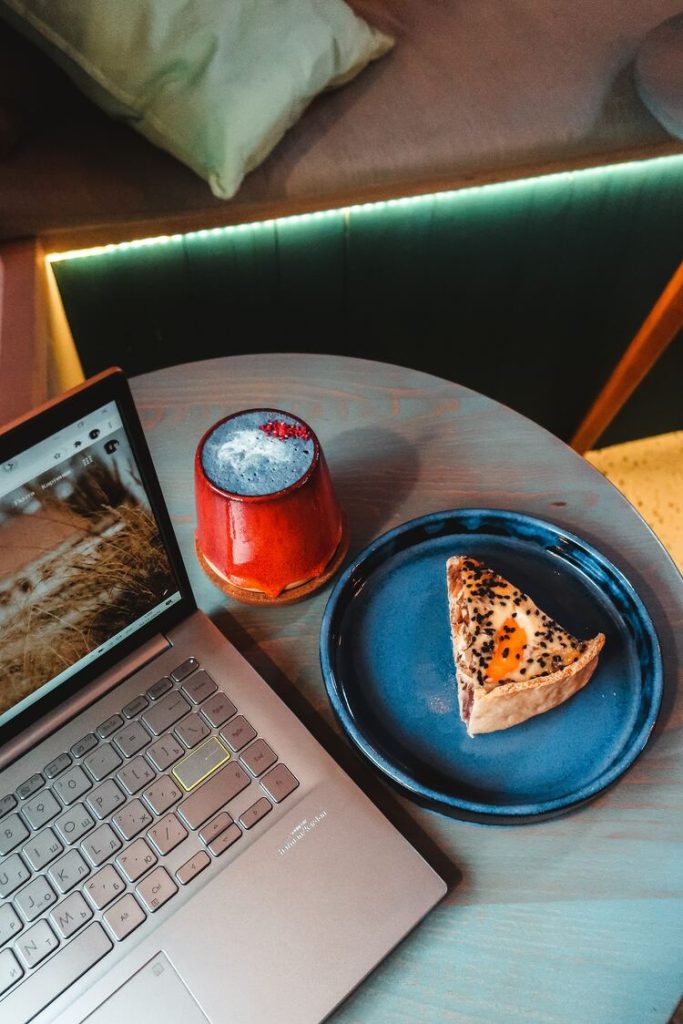
While blue matcha and green matcha share some similarities, they have distinct flavors and characteristics that set them apart. If you’re looking for a versatile, mild-tasting alternative to green matcha, I highly recommend giving blue matcha a try!
To you, what does blue matcha taste like?
More About Herbal Tea
What Does Peppermint Tea Taste Like?
What Does Mint Tea Taste Like?
What Does Ginger Tea Taste Like?
What Does Lemon Balm Tea Taste Like?
What Does Chamomile Tea Taste Like?
What Does Lavender Tea Taste Like?
What Does Mullein Tea Taste Like?
What Does Raspberry Leaf Tea Taste Like?
What Does Mugwort Tea Taste Like?
What Does Licorice Root Tea Taste Like?